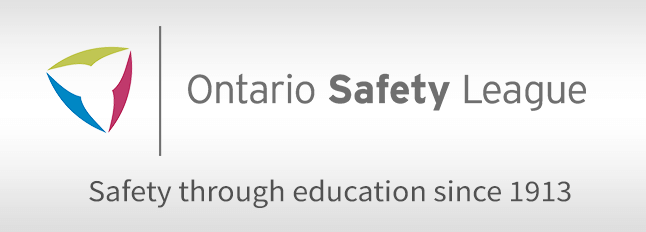DISTRACTED DRIVING
Distractions are the enemy of a mentally alert driver. The driver must be aware of the surroundings in order to react quickly, safely and clearly in any driving situation. Driving requires full attention; any distractions to the driver could impact on safe driving skills.
Driving:
It is the legal responsibility of those controlling a moving vehicle through an ever-changing traffic environment to give this demanding task their full attention. The driver must be constantly detecting hazards, managing space and maintaining constant care and control.
Distraction:
It is a condition or state of mind in which the attention is diverted from an original focus or interest and the ability or power to concentrate mentally is lost.
What can distract a driver? Something outside the vehicle, adjusting a radio or CD player, talking with other occupants, adjusting mirrors or climate control while driving, eating or drinking, cell-phone usage and smoking. Whatever or whoever takes the driver’s ability from concentrating on the driving task seriously endangers the lives of the driver and others.
Different age groups appear to be distracted by varying situations and different things. Make a list of at least five (things or situations) that can be a distraction to you while driving?
- _____________________________________________________________
- _____________________________________________________________
- _____________________________________________________________
- _____________________________________________________________
- _____________________________________________________________
- How can you eliminate those distractions?
Cellular/Smart Phones: Speaking, reading or texting on a cell phone when driving increases the chances of a collision. It divides your attention between these separate tasks. Focus on DRIVING. Most vehicles and in-car systems today use a ‘hands-free’ technology.
IMPARED DRIVING (Alcohol & Drugs)
The Effects of Alcohol on the Driving
- Scanning far ahead: About 90% of what driver identifies in a traffic scenario is through the sense of vision. Levels of alcohol as low as 0.03%BAC can lessen one’s muscular control by relaxing the fine eye muscles and thereby adversely affecting visual acuity, depth perception, peripheral vision, colour recognition and night vision.
- Anticipation: the ability to foresee or anticipate what is likely to happen depends on one’s ability to accurately process the information previously identified. Alcohol impairs mental functions.
- Decisions: As with anticipation, the decision phase involves the brain and the thinking process, and experimentation has shown that levels as low as 0.45% BAC reduce these abilities up to 15%. Of particular concern is the willingness of a driver to take greater risks after drinking. Alcohol tends to produce more uninhibited and aggressive behavior and thus poor driving decisions.
- Executing the selected driving tactic: while alcohol affects a driver’s judgment and thinking first, it will eventually impair motor skills (muscle coordination) necessary for maintaining vehicle control.
The Physiological Effects of Alcohol are Affected By:
- Body size: Larger persons have a greater volume of blood than smaller people and will generally acquire a lower BAC from a given quantity of alcohol. However, additional body weight in the form of fat is not helpful as alcohol is not soluble in fatty tissue.
- Alcohol content: the more alcohol a given drink contains and the more drinks one consumes in a given period of time, the higher BAC it will produce.
- Drink size: a larger serving will usually contain more alcohol and produce a higher BAC than a smaller one.
- Drinking time: All other factors being equal, the shorter the time period in which drinking occurs, the higher ones’ BAC will be. Conversely the longer the period of time after drinking, the lower the BAC becomes.
- Amount of food ingested: although no food will absorb or neutralize alcohol, it may initially coat the stomach lining and slow down the absorbing of alcohol. However, this situation is only temporary, as virtually all of the alcohol will eventually be absorbed into the bloodstream.
Psychological:
- Attention: The ability to concentrate, especially on several sources of incoming information, is diminished.
- Memory: Inability to store and retain information has been found to occur with a BAC as low as 0.03%.
- Emotions: Control tends to be lost as more alcohol is consumed.
- Aggression: Aggressive behavior tends to be enhanced especially in males, when placed in competitive situations.
- Tolerance: Especially in the early stages of intoxication, some people learn to compensate by developing coping mechanisms that mask the effects of alcohol , such as not participating in those activities that might reveal their impairment
Effects of other Common Drugs on the Driving Task:
- Marijuana: is classified as a mild hallucinogen, this drug primarily affects the way the users perceives thing. Currently marijuana is second only to alcohol as the drug most often found in the bodies of crash victims. In recent years the strength of marijuana (the amount of the psychoactive ingredient THC) has increased because of significantly improved growing methods. Marijuana can act as a stimulant or depressant depending on the user’s mood and experience with the drug. Studies on the effects of marijuana on driving performance have resulted in the following findings;
- Complex reaction time slowed, giving the driver less time to avoid hazards.
- Errors in recognition and interpretation of traffic signs, signals and pavement markings are more likely.
- In producing a more passive behaviour, there is a tendency to drive at slower speeds than normal, which can interfere with the movement of other traffic.
- Attention span and the ability to concentrate on several things simultaneously are lowered.
- Accurate judgments of time and distance relationships are lessened, causing problems in allowing adequate space for passing, following and stopping.
- Combining marijuana with alcohol produces a synergistic effect that results in driving performance which is significantly worse than that experienced when either of the drugs is taken alone.
SYNERGISM: The effects of taking two or more drugs at the same time result in a more than a “one-plus-one” effect. In other words, the total effect of combining drugs may be greater than and quite different from that expected from the sum of their individual effects. Any time alcohol is mixed with another drug, it is likely to produce a synergistic effect.
- Cocaine: Classified as a stimulant, it can produce extreme mood swings, from feelings of joy and happiness to violent hallucinations and severe depression. The flowing information is provided to explain the various aspects of this drug.
- Both usage and cocaine related deaths have increased dramatically since 1980.
- Side effects of blurred vision and slowed glare recovery, impair perception and thus reduce a person’s ability to drive safely.
- Over –the-counter-drugs: Also referred to collectively as nonprescription drugs, they include such items as aspirin, sleeping aids, antihistamines, cold remedies, and products containing caffeine. Although they account for 70% of all legal drug purchases, they can and do adversely affect driving performance. By law their label must provide adequate direction for use including recommendations for operating machinery, which should be strictly followed.
- Prescription drugs: as with the previous group, directions are provided for their use and should be strictly followed, not only to accomplish the intended purpose, but also to limit dangerous and undesirable side effects. As with any other drug, excessive usage can be harmful. Depending on the drug, a person’s ability to stay alert and react to hazardous driving situations can be adversely affected.
- Inhalants: These are a diverse group of breathable chemicals (usually solvents) that produce psychoactive vapors or fumes. Although not usually considered drugs, the effects of inhalants include impaired vision and judgment, reduced muscular control, lower blood pressure, heat irregularities, inflammation of the nasal passages and lungs, wheezing and coughing and asphyxiation, in severe cases. Their intoxicating effects are immediate and can last from 15 to 45 minutes after inhaling has stopped.
SPEEDING
SPEED vs. TIME: HOW MUCH TIME DO YOU SAVE?
Very few people bother to calculate how much time they may be saving by exceeding the speed limit. On short trips of 5 or 25 kilometres, the difference between driving 100 Km/h and 140 Km/h is negligible.
To travel a distance of 5 kilometres:
100 km/h takes 3 minutes or 180 seconds
120 km/h takes 2.5 minutes or150 seconds
(From 100 km/h to 120 km/h, you save only 30 seconds)
140 km/h takes 2.14 minutes or128 seconds
(From 120 km/h to 140 km/h, you save only an additional 22 seconds)
To travel a distance of 25 kilometres:
100 km/h takes 15 minutes
120 km/h takes 12.5 minutes
(From 100 km/h to 120km/h, you save only 2.5 minutes)
140 km/h takes 10.57 minutes
(From 120 km/h to 140 km/h, you save only an additional 1.75 minutes)
ROAD RAGE
Occasionally, motorists have found themselves in unpleasant situations involving abusive gestures or language from another driver who takes issue with how they drive. Anxiety and frustration can quickly spark an aggressive or careless driver, who tailgates, speeds, fails to yield the right of way among other behaviours.
Aggressive driving behaviour may lead to incidents of road rage where motorists have been threatened and/or subjected to retaliatory actions by angry motorists.
If people drive responsibly they will reduce the chances of conflict on the road and help make our roads safer. Experts recommend the following tips to help avoid road conflicts:
- Plan your route in advance. Some of the most erratic and inconsiderate driving occurs when motorists are lost;
- Make a conscious decision not to take your problems with you when driving;
- Combat the warning signs of stress by getting fresh air and breathing deeply and slowly. Listen to relaxing music;
- Avoid long drives if you can. If you take a long trip, stop every few hours for a rest. Before and during a long drive, avoid heavy meals which tend to make a person lethargic;
- Drive in a courteous and considerate manner. Give way at busy intersections and where traffic lanes merge;
- Don’t compete or retaliate. If someone’s driving annoys you, don’t try to “educate them”. Leave traffic enforcement to the police;
- Don’t take other driver’s mistakes personally;
- Avoid honking your horn unless absolutely necessary and, if you must, tap on it lightly;
- Say, “Sorry” if you make a mistake. An apology can reduce the risk of conflict;
- If you are being physically threatened, stay in your car and lock the doors. If you have a cell phone call the police. Use your horn and lights to attract attention;
- If you think you are being followed, do not drive home. Go to a police station or a busy public place;
- Don’t carry a defensive weapon; it might provoke a potential assailant.
Develop your own plan in case of encountering an enraged driver.
- IF YOU FIND YOURSELF THE TARGET OF AN AGGRESSIVE DRIVER;
- DO NOT ALLOW THE INCIDENT TO ESCALATE;
- AVOID MAKING EYE CONTACT, GESTURING OR PARTICIPATING OF CHALLENGES ANY KIND;
- IF YOU REALIZE THAT THE OTHER DRIVER IS GETTING VIOLENT, PROTECT YOURSELF AND SEEK HELP, DRIVE TO A POLICE STATION OR TO CROWDED AREA;
- MAKE SURE YOUR DOORS ARE LOCKED AND YOUR WINDOWS ROLLED UP.

